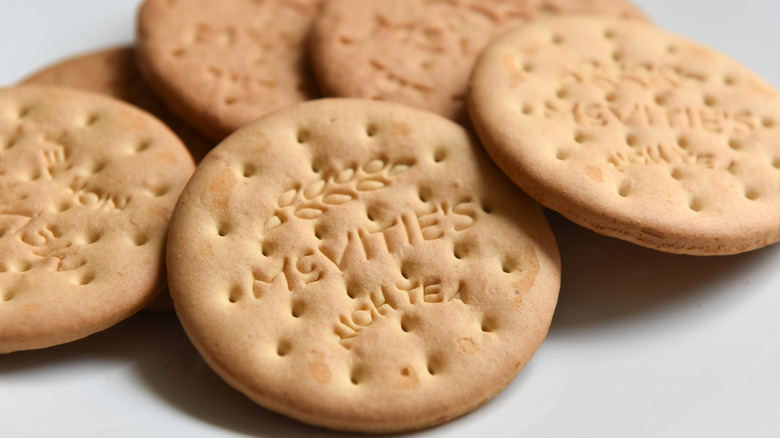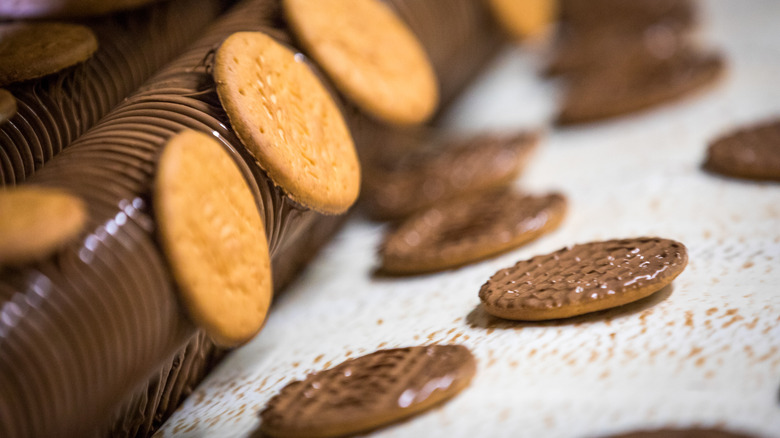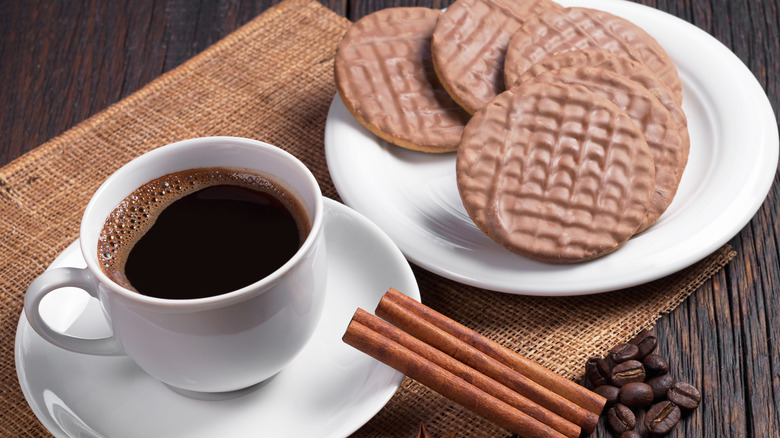Why Americans Have A Hard Time Understanding British 'Digestives'
There are plenty of British foods that Americans love, but not all of them translate as well as classic fish and chips or a Full English breakfast. This is partially due to the literal translation of some words. For example, British "pudding" isn't the creamy dessert that the word summons to mind for most Americans. Being offered a "biscuit" might also be met with the same level of confusion, and which is often multiplied in the case of digestive biscuits.
While McVitie's famous digestive biscuits are popular throughout the United Kingdom, they've never caught on in the United States, and the name might be part of the problem. Digestives — despite the health-boosting character of their name — are just simple cookies. They have a subtle, semi-sweet taste that goes well with tea or coffee, but their name makes them sound more like a Fiber One bar than a sweet treat. It's possible that the confusion caused by their name is why Americans have such a hard time wrapping their heads around digestive biscuits.
History of digestive biscuits
The concept of the digestive biscuit is almost as old as the United States itself. The first mention of this snack comes from the early 19th century when it appeared in the Manchester Courier and Lancashire General Advertiser in 1829. Back then, the term digestive biscuit was mostly used to refer to a style of biscuit made with whole wheatmeal flour. The advertisement for these biscuits claimed that they are in fact a digestive aid that will help you stay healthy to the extent of replacing medicines.
These acclaimed healthful properties were likely due to the presence of baking soda in the cookies. At that time, baking soda was known as a useful indigestion aid, and it was believed those properties were still present in these biscuits. It would later be understood that this isn't the case, however, because those stomach-settling properties are removed once the baking soda is cooked. Nevertheless, the name continued to be put to use, and can still be found on store shelves all over the U.K.
How to enjoy a digestive biscuit
While digestives might not be the most popular snack, they can still be found in plenty of grocery stores in the U.S. Naturally though, the selection is not as extensive as what's available across the pond though. The basic digestive biscuit has an interesting balance of sweet and savory because it uses that wholemeal flour and isn't as heavily sweetened as most American cookies. Luckily, digestives can also be found coated in chocolate or with chocolate and caramel for those that prefer their biscuits to be on the sweeter side.
For the most part, this style of cookie isn't meant to be a dessert that you look forward to all day. Their main role in the modern U.K. is to serve as the accompanying snack to a steaming hot cup of tea — likely another reason they never caught on in the U.S. To many Brits, the best way to enjoy a digestive — chocolate coated or otherwise — is to dunk it into your tea and hastily finesse it to your mouth before the humble cookie crumbles.


